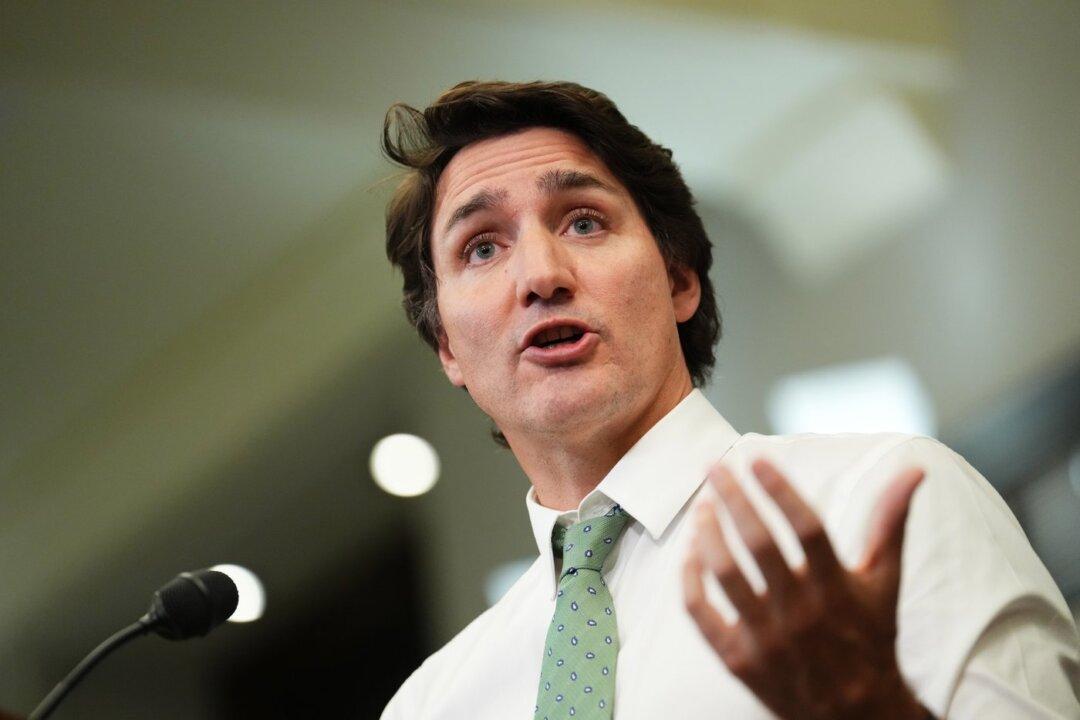The Liberal government has increased the size of the federal public service by nearly 100,000 employees since taking office in 2015, according to a new study by the Montreal Economic Institute (MEI).
MEI public policy analyst Gabriel Giguère says Mr. Trudeau has hired significantly more public servants than any other Canadian Prime Minister in recent history.
“Since the Trudeau government came to power, there has been an unprecedented expansion in the size of the bureaucracy,” says Mr. Giguère in a press release. “The government seems to have lost control of government growth.”
Prior to Mr. Trudeau coming to power, every Canadian prime minister going back to 1984 has decreased the number of civil servants per 1,000 population during their time in office, the report shows.
Brian Mulroney, who was prime minister from 1984 to 1993, lowered public servant levels by 10.2 percent, while the next in line, Liberal Jean Chretien, cut back by 9.7 percent during his 10 years in office. Liberal Paul Martin, who was in office for slightly less than three years, cut back by 1 percent while Conservative Stephen Harper chopped staffing by 6.3 percent between 2006 and 2015.
“Given such a large increase in the size of government, one might expect Canadians to see a significant difference in the quantity and quality of federal services, but this has not materialized,” Mr. Giguère says. “The growth in the federal workforce under the Trudeau government has broken with the restraint that characterized the governments of the previous 40 years.”
The increase in the labour force comes with a corresponding increase in payroll. Labour costs have risen by 53.2 percent since 2015, according to the Parliamentary Budget Officer (PBO) figures. A 2023 PBO report noted a 30.9 percent increase in personnel spending over the previous two years, from $46.3 billion in 2019–20 to $60.7 billion in 2021–22.
“Though the COVID-19 pandemic may have affected the hiring of civil servants, it is not the primary factor explaining the increase in the number of federal employees,” Mr. Giguère writes in his report. “The rate of growth in the federal workforce was already high in 2019 and this has been sustained right through 2023 at a pace unmatched at any point in the preceding 40 years.”
Impact on Canadians
Canadians already carry a heavy tax load, according to a 2023 report from the Fraser Institute think tank. The average Canadian family last year paid 46 percent of its annual income in taxes—including income taxes, property taxes, payroll taxes, sales taxes, and carbon taxes.A slew of tax hikes are coming through, including at the federal level a rise in Canada Pension Plan (CPP) and Employment Insurance (EI) contributions and in the carbon tax, alcohol tax, and more. On the municipal level, many major cities are seeing big property tax hikes.
This all adds financial strain on families, Mr. Fuss says, but it also has impacts beyond that. High taxation makes Canada uncompetitive compared to other countries, and it’s also important to consider where those tax dollars are going and whether Canadians are getting value for their money.
“Taxes obviously do pay for important public services,” Mr. Fuss says. “But we also need to consider where the money is going and how effective that spending is.”







